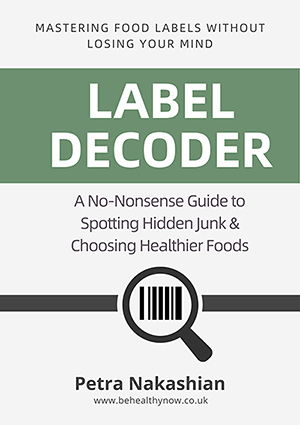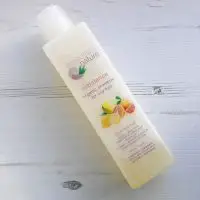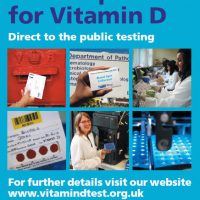Recently updated on October 16th, 2025 at 12:02 pm
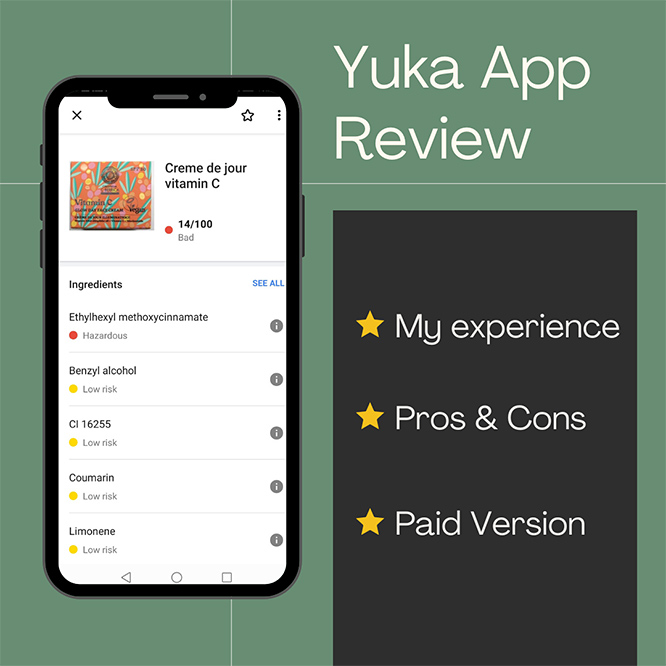
I’ve been using the Yuka app for a while now, and I wanted to share my honest thoughts about it.
If you haven’t heard about it, Yuka is a mobile app that scans your food and beauty products. It gives each one a score that tells you how healthy it is for you. The scores range from “Bad” (0-25) to “Excellent” (75-100). And if something scores ‘Bad’, Yuka suggests better options for you to pick from.
If you’re trying to eat or shop healthier but don’t have time to check every single ingredient, Yuka can be a real time-saver. It’s also brilliant for avoiding questionable ingredients in your beauty products.
That said, I’ve found it works better for cosmetics than for food. The food scores can be helpful, but they don’t always tell the full story – there are a few flaws to be aware of (I’ll explain more about that later in the post).
My experience using a Yuka app
Getting started with the Yuka app is straightforward. Download it from Google Play or the App Store, and sign up with either your Facebook account or an email.
To use it, just scan a barcode with your phone’s camera.

The first thing I decided to scan was my new face cream by Natura Siberica. I’m a big fan because it keeps my skin hydrated and soft, plus it has SPF20 for that extra sun protection. Shockingly, this cream gets a really bad rating – 14 out of 100! How can that be?? I’ve been using quite a few products from Natura Siberica because they’re affordable and I thought they were pretty natural, but are they? Let’s see what the app says…
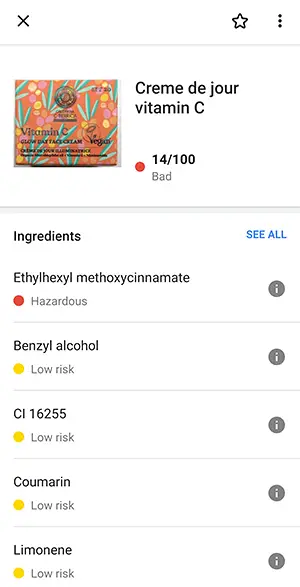
Yuka highlighted one risky ingredient on the list: ethylhexyl methoxycinnamate. By tapping on the information icon, I learned more about this ingredient, what it is, and its potential issues. It was quite a revelation! This ingredient, also known as “octinoxate,” is a UV filter. While it’s allowed by the EU at a maximum concentration of 10%, it’s not approved in the USA, Canada, and Hawaii because of the risks it poses to the marine environment.
Wow, I’m really frustrated! How can a brand that promotes itself as “natural” use this kind of ingredient in their products? I’m seriously disappointed. When I bought this cream, the ingredient didn’t catch my eye because they used the name “ethylhexyl methoxycinnamate” instead of “octinoxate,” which I’ve heard of before.
The Yuka app further explains why this ingredient is so bad and cites several studies. It turns out it could be an endocrine disruptor, which means it might mess with hormone levels and thyroid activity. It’s also known to cause serious irritation to the eyes, skin, and lungs.
If I had this information earlier, I definitely wouldn’t have bought the cream. I’m going to be extra careful from now on and scan everything with Yuka before making a purchase. The reports in the app seem accurate and well-researched.
It’s a relief to know that this was the only high-risk ingredient in the cream. The other ingredients pose lower risks, like potential fragrance allergens such as limonene, or no risk at all.
When it comes to finding an alternative for this cream, the Yuka app didn’t offer any suggestions, which is a bit disappointing. It looks like I’ll have to search for another product myself, one with similar benefits but without the harmful UV filter.
Next up, I scanned a vitamin C eye cream from Natura Siberica and was pleased to see it scored a solid 72 out of 100. That’s a bit of a relief – it reassures me that not everything from Natura Siberica is questionable and that I’ve made some good choices. Turns out, a few other products from the brand also received positive ratings.
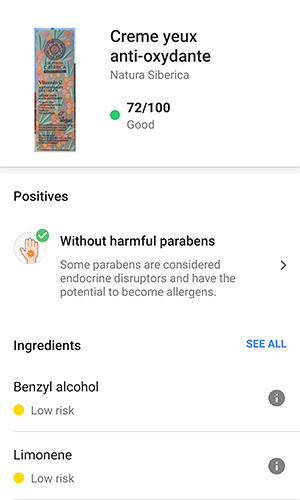
Scanning Food Products with Yuka
Moving on to food, I started with Weetabix, which my toddler enjoys for breakfast a few times a week. I’ve already done the research for this one and knew it was pretty healthy, especially because it’s low in sugar. The app’s rating of 90 out of 100 just confirms that it’s a good breakfast option.
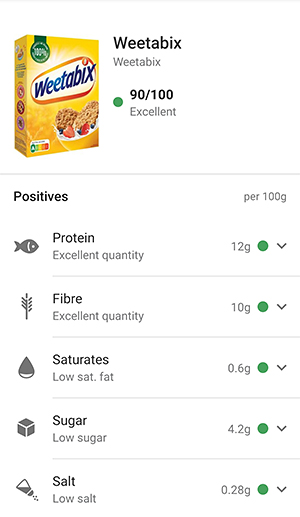
Then I scanned some multigrain flakes, another product I consider to be low in sugar. Seeing the app give it an 84 out of 100 was great! It’s nice to have my choices validated by the app.
The app proved to be quite versatile, giving a score to Lidl’s chickpeas (75/100) and even assessing cheese spread (unfortunately, it scored poorly) and spaghetti.
However, when I tried scanning several other food items, I found that the app doesn’t have every product in its database. Some of my items didn’t come up with any information at all.
After scanning a food item, Yuka gives you a breakdown of how it decided on the score. You can tap “Scoring Method” to see exactly what influenced it; things like:
- Nutritional value (based on the Nutri-Score system, which looks at calories, sugar, salt, and so on)
- Additives (the number and type found in the product)
- Organic status (if it’s organic, that usually gives the score a little boost)
You can also favourite any products you like by tapping the heart icon (handy if you want to remember them for next time) or share ratings with friends through WhatsApp or email.
Overall, the app is really easy to use. The layout is clean, simple, and intuitive – no complaints there!
Pros and cons of the Yuka app
After using Yuka to scan all sorts of food and beauty products, here’s what I’ve found – the good and the not-so-good.
Pros:
- Free to use – You don’t have to pay anything to get started.
- No ads – It’s refreshing not to be bombarded with pop-ups or sponsored products.
- Independent – Yuka isn’t funded by brands, so its scores are generally unbiased.
- Simple and intuitive – The app is really easy to navigate, even if you’re not techy.
- Clean design – Everything feels clear and uncluttered.
- Covers both food and cosmetics – Handy if you want one app for everything.
- Good info (mainly for beauty products) – You can see why a product scored the way it did and tap to learn about specific, sometimes risky, ingredients in beauty products. (Non-risky ones don’t have explanations.)
- Privacy-focused – Your scans and data aren’t sold or shared.
- Foolproof guidance – The app gives clear instructions, so you’ll know exactly what to do from the start.
- Social Sharing – You can easily share your discoveries with friends or family.
- Time-Saving – It helps you quickly get an idea of how healthy a product is without needing to analyse every label.
Cons:
- Not every product is listed – Especially smaller or local brands.
- Sometimes doesn’t suggest alternatives – You may need to do your own digging.
- Needs internet – The free version won’t work offline (the premium one does).
- Limited languages – It only works for ingredients in English, Spanish, Italian, German, or French.
- Food ingredient info is lacking – Unlike with beauty products, you can’t tap to learn about some of the ingredients in food items. You can’t even see the full list of ingredients, which is disappointing. It would be so useful to get more insight into at least the questionable ones, but no luck there.
- Food ratings can be misleading – The score alone doesn’t always reflect how healthy a food really is.
Where Yuka Falls Short with Food
When it comes to food, Yuka can be useful – but it definitely has its flaws. The biggest one? It doesn’t consider how much you actually eat.
The app gives you a single score, and if a product gets a green “Excellent” rating, it’s easy to assume you can enjoy as much as you like. But that’s not how it works in real life.
Take yoghurt, for example. Half a pot might still count as a healthy portion, but finish the whole thing and suddenly you’re getting double the sugar – turning that “green” choice into more of a red one.
Yuka also doesn’t show the full ingredient list for food products or highlight potentially “bad” ingredients the way it does for beauty items. So while it’s great for quick checks, it doesn’t give you the full picture.
It’s a good starting point, but if you want to make genuinely informed choices, you need to understand how to read labels yourself.
And that’s where a bit of label knowledge really makes all the difference.
The Solution?
If you’re serious about choosing healthier foods (and let’s be honest, food labels can be so confusing – this post about misleading food labels proves it), the Yuka app alone isn’t the answer. It can point you in the right direction, but it often oversimplifies things.
That’s why I put together Label Decoder – a simple, practical guide that helps you go beyond what apps like Yuka can tell you. You’ll learn how to spot added sugars, understand tricky serving sizes, and see through clever marketing claims that make some foods look healthier than they really are.
It’s designed to make reading labels quick and easy, so you can pick smarter options without overthinking it.
👉 Find out more about Label Decoder here.
Paid Version of the Yuka App
Yuka also offers a paid version with a few extra features, but honestly, most people will do just fine with the free one.
With the premium version, you can:
- Scan products offline, without needing an internet connection
- Search the database instead of scanning every barcode
- Personalise your preferences (for example, avoid palm oil, gluten, or lactose)
- Keep an unlimited history of everything you’ve scanned
How much does the Yuka app cost?
The membership works on an open pricing model – you choose how much you want to pay, starting from £10/10eur per year. It’s a nice idea, but unless you’re scanning products constantly, the free version gives you more than enough to work with.
Final Thoughts
Overall, I still think Yuka is a handy tool, especially if you’re short on time and just want a quick idea of how healthy a product might be. It’s simple, independent, and genuinely useful for checking beauty products or spotting obvious red flags.
But when it comes to food, it’s best to see it as a starting point rather than a final verdict. The scores don’t always tell the full story, and what looks “green” in the app might not be quite so healthy once you look at the label more closely.
If you really want to make confident, informed choices, learning how to read labels yourself makes all the difference. That’s what Label Decoder is all about — helping you see what apps often miss.
👉 Find out more about Label Decoder here.
FAQs
Is the Yuka app legit?
Yes, the Yuka app is completely legitimate. It’s used by millions of people worldwide to check the health impact of food and cosmetic products. I’ve tested it myself and can confirm it works as described – it scans, scores, and gives you useful summaries in seconds.
Is Yuka app biased?
No, not from what I’ve seen. Yuka is independent and doesn’t take money from brands, which helps keep its evaluations objective. However, the scoring system it uses (like Nutri-Score for foods) can sometimes oversimplify things – so while it’s not biased, it’s not perfect either.
Is Yuka app reliable for cosmetics?
Yes, this is where Yuka really shines. It’s excellent at breaking down what’s inside your skincare and beauty products. You can tap on potentially risky ingredients and get a short explanation of what they are and why they might be concerning. It’s definitely helped me spot ingredients I’d otherwise miss.
Is the Yuka app reliable for food?
It’s decent for quick checks but not something to rely on completely. The app doesn’t show full ingredient lists, and it doesn’t account for how much you actually eat – so a “green” score doesn’t always mean the food is healthy in real life. Think of it as a first step, not a final answer.
How accurate is the Yuka app?
Yuka bases its scores on scientific data and established databases, so the information is generally trustworthy. Just keep in mind that no app can replace reading the label yourself, especially when it comes to sugar, portion sizes, and processed ingredients.
Is the paid version of Yuka worth it?
That depends on how often you use the app. If you scan products all the time and want features like offline use or personalised filters (for example, avoiding palm oil or gluten), then it could be worth it. But if you’re only using it occasionally, the free version gives you everything you really need.

